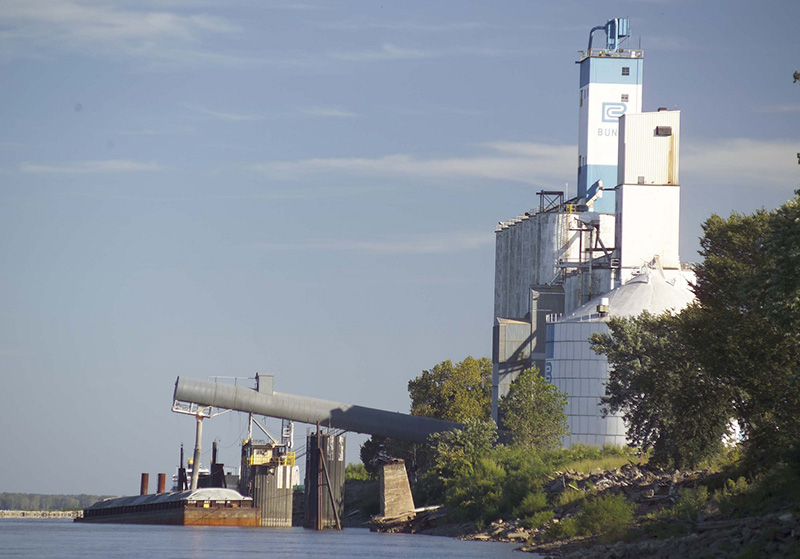The U.S.-China trade war has opened up new opportunities for China to buy soybeans from Latin American producers, which is enriching places like Brazil and Argentina while causing economic hardship for U.S. farmers and the barge industry that ships their products.
The tit for tat trade war, while well-intentioned to curb Chinese trade abuses, is now more than a year old and has hurt many of President Trump’s most ardent supporters in the farm belt and in the inland barging industry. More than 240 farms in the Midwest filed for bankruptcy over the past year, and barge lines have scrambled to find new business to replace slumping grain shipments. The tariffs have hit both industries hard as business was also hurt by heavy rains and floods that delayed planting and halted barge traffic on much of the river system.
Last July, Beijing imposed a 25% tariff on many U.S. products in response to similar trade restrictions levied by Washington, D.C., on Chinese goods. China essentially canceled its soybean purchases. Some buying resumed following a truce in December, but in recent weeks the tensions have been renewed, sending markets into disarray. Additional U.S. tariffs are set to go into effect over the Labor Day weekend with no end in sight to the trade tensions.
Loss of the Chinese market is huge, as the U.S. is the largest supplier of soybeans to China, with 60% of U.S. soybean exports going there. China is the world’s largest consumer of soybeans, using them for such things as soy sauce and animal feed. Brazil and Argentina are the world’s second and third top exporters respectively.
Now the situation has reversed.
In 2017, before the tariff dispute began, the U.S. exported $12.2 billion of soybeans to China. In 2018, that number declined nearly 75% to $3.1 billion. Through the first six months of 2019, U.S. soybean exports to China totaled only $2.9 billion.
Meanwhile, soybean trade between China, Argentina and Brazil has surged, as these suppliers seek to fill the gap caused by the U.S. trade restrictions. In July, U.S. Customs data shows that soybean imports from Argentina to China were up three-fold from the previous year, reaching the highest monthly level since August 2017. Purchases are also up significantly from Brazil. To the dismay of the U.S., China is now the South America’s top trading partner.
Other countries have increased their purchases of U.S. soybeans since the tariffs began, and Brazil has bought some U.S. product to replenish dwindling supplies. This is not enough to cover for the loss of contracts with the Chinese.
Soybean trade is just the tip of the iceberg when it comes to the growing Chinese influence in the region. Beijing has struck deals to build a rail line across Argentina’s agricultural heartland, as well as two hydroelectric dams and a space station in northern Patagonia. It also buys oil from Venezuela and copper and iron from Chile and Peru.
In addition, the Chinese are angling to influence global food supplies and prices by bidding to dredge Argentina’s Parana River, an important waterway that carries 80% of the country’s farm products to the south Atlantic and beyond, according to a report by Reuters.
The irony of this is not lost on U.S. soybean producers, as it comes at a time when the U.S. struggles to invest in its own waterways and perform dredging in its rivers and ports.
“The Chinese government is willing to invest in channel deepening in Argentina,” said Mike Steenhoek, executive director of the Soy Transportation Coalition in Iowa. “Is the U.S. government willing to invest in channel deepening in the United States?”




